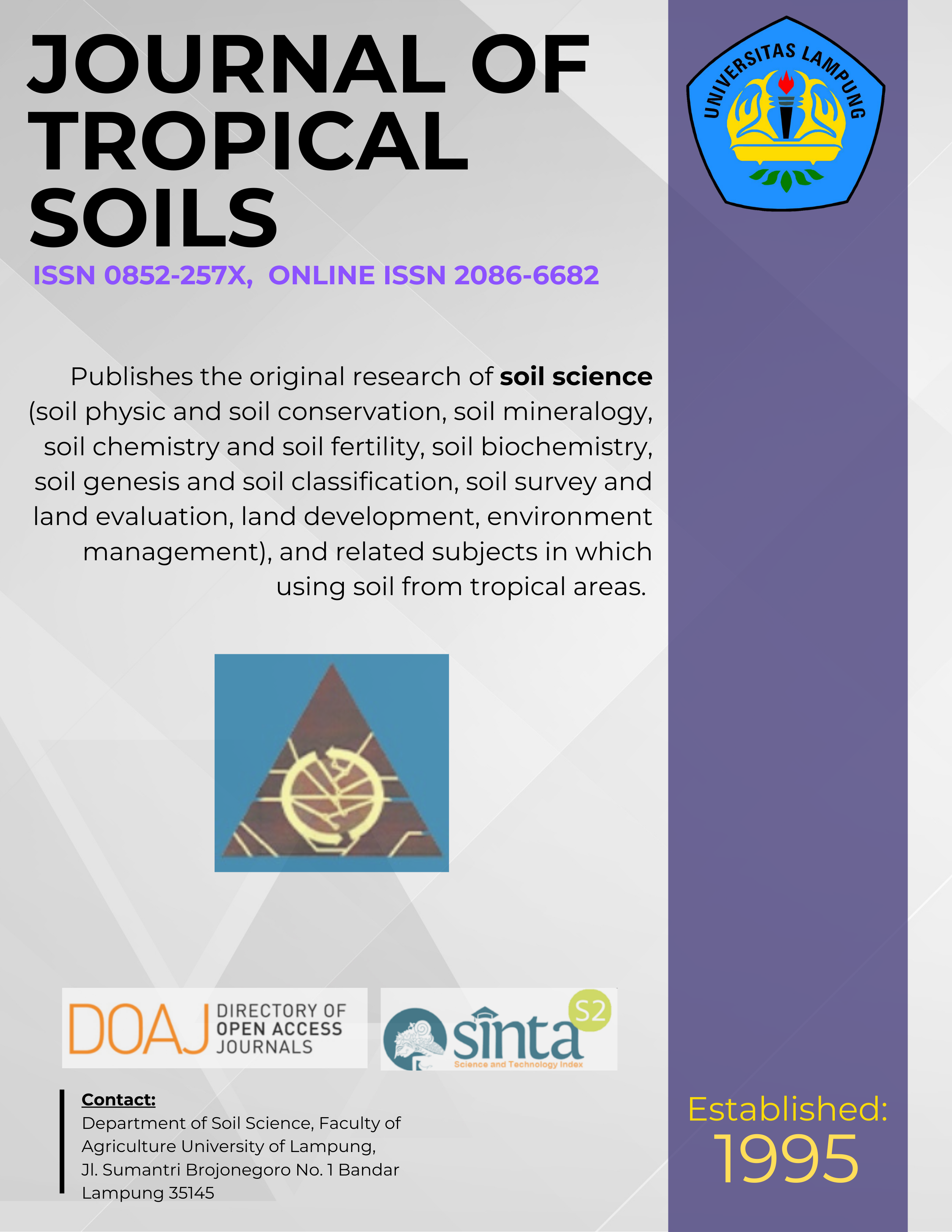Parameter Sensitivity Test of SWAT Hydrological Model On Two Different Resolutions (A Case Study of Upper Cisadane Subbasin, West Java)
Main Article Content
Abstract
A sensitivity analysis of SWAT parameters was conducted on different spatial resolutions. The sensitivity analysis aimed to determine the input parameters that have the most impact on the of output of the model. Resolution of different inputs in the SWAT analysis can produce different input parameters that can affect the output. The purpose of this study was to identify the level of sensitivity of the parameters used in the SWAT model simulated on two different resolutions, i.e. 1: 100,000 and 1: 250,000. A sensitivity test was conducted manually using the absolute sensitivity method, i.e. a method to test the sensitivity of the parameters of SWAT model that can change (either increase or decrease) one by one while the other parameters are constant. The results show that the Nash-Sutcliffe Efficiency (NSE) coefficients derived after calibration of the SWAT models on both resolutions of maps indicate similar performance of the models, with the category for the daily simulation of excellent (NSE coefficients of 0.55 and 0.54), while the monthly simulation is categorized as very satisfactory (NSE coefficients of 0.80 and 0.82). The sensitive parameters of the SWAT model identified in the current study include CN2 (initial SCS runoff curve number for moisture condition II), Alpha_BNK (flow recession constant or recession proportional to the banks of the river), CH_K2 (effective hydraulic conductivity in main channel alluvium), CH_N2 (Manning’s “n†value for the main channel), ESCO (soil evaporation compensation factor), GW_Delay (groundwater delay), and GW_Revap (groundwater “revap†coefficient).
Â
Â
Downloads
Article Details
Section
License for Authors
Authors who publish with this journal agree to the following terms:
- Authors retain copyright and grant the journal right of first publication with the work simultaneously licensed under a Creative Commons Attribution License that allows others to share the work with an acknowledgement of the work's authorship and initial publication in this journal.
- Authors are able to enter into separate, additional contractual arrangements for the non-exclusive distribution of the journal's published version of the work (e.g., post it to an institutional repository or publish it in a book), with an acknowledgement of its initial publication in this journal.
- Authors are permitted and encouraged to post their work online (e.g., in institutional repositories or on their website) prior to and during the submission process, as it can lead to productive exchanges, as well as earlier and greater citation of published work (See The Effect of Open Access).
License for Regular Users
Other regular users who want to cite, distribute, remix, tweak, and build upon author’s works, even for commercial purposes, should acknowledge the work’s authorship and initial publication in this journal, licensed under a Creative Commons Attribution License.

